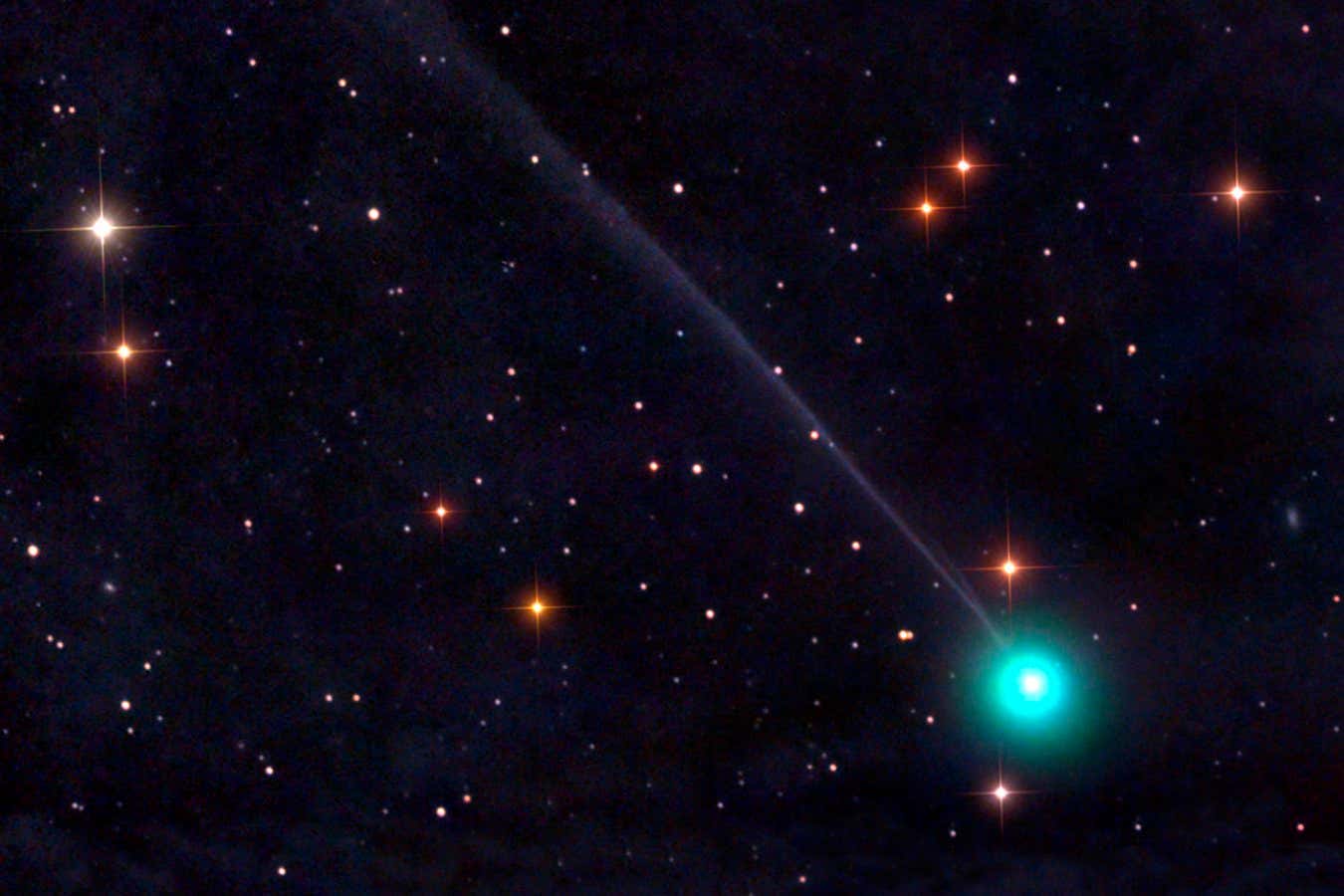Three comets named Hartley, Encke and Tsuchinshan will pass by the sun in the next few months and be visible from Earth. Here’s how you can spot them
By Abigail Beall
29 September 2023
Comet Encke, seen here in 2013, passes near the sun every 3.3 years
DAMIAN PEACH/SCIENCE PHOTO LIBRARY
The green comet Nishimura has been a source of excitement to astronomers since its discovery in August, but it is now heading away from us, slowly disappearing from view. It won’t be back for another 400 years, but luckily we know of a few other comets on their way towards Earth that will be visible over the next few months.
Comets are balls of dust and ice that come from the outer reaches of the solar system, in the cold climes far beyond the orbit of Neptune. They become visible from Earth when their orbits bring them near to the sun. The warmth of the sun’s rays turns their ice into a charged gas called a plasma, creating a plasma tail that stretches away from the comet. Dust also evaporates, creating a dust tail. This is what gives comets their recognisable shape: a nucleus in the centre with two long tails typically stretching for a few hundred thousand kilometres behind.
We usually know months or years ahead of time when a comet will appear, but sometimes, as happened with Nishimura, they surprise us. Nishimura was discovered just a month before its closest approach to the sun.
Advertisement
Short-period comets, which take just a few years to orbit the sun, are usually known to us because we have seen them many times before, while long-period comets like Nishimura, with orbits lasting hundreds of years, can turn up unexpectedly.
A handful of comets are known to be passing by the sun in the next few months and will become visible from Earth. It can be tricky to predict how bright a comet will appear in the night sky, but it is likely that you will need binoculars or a small telescope to see all of them – unless another bright surprise, like Nishimura, turns up.
Hartley
Also known as 103P, comet Hartley was first spotted in 1986 at Siding Spring Observatory in Australia. It is a small, peanut-shaped comet about 1.6 kilometres across that takes about 6.5 years to orbit the sun. It last passed by in 2017, and the time before, in 2010, it was caught on camera by NASA’s Deep Impact spacecraft.
